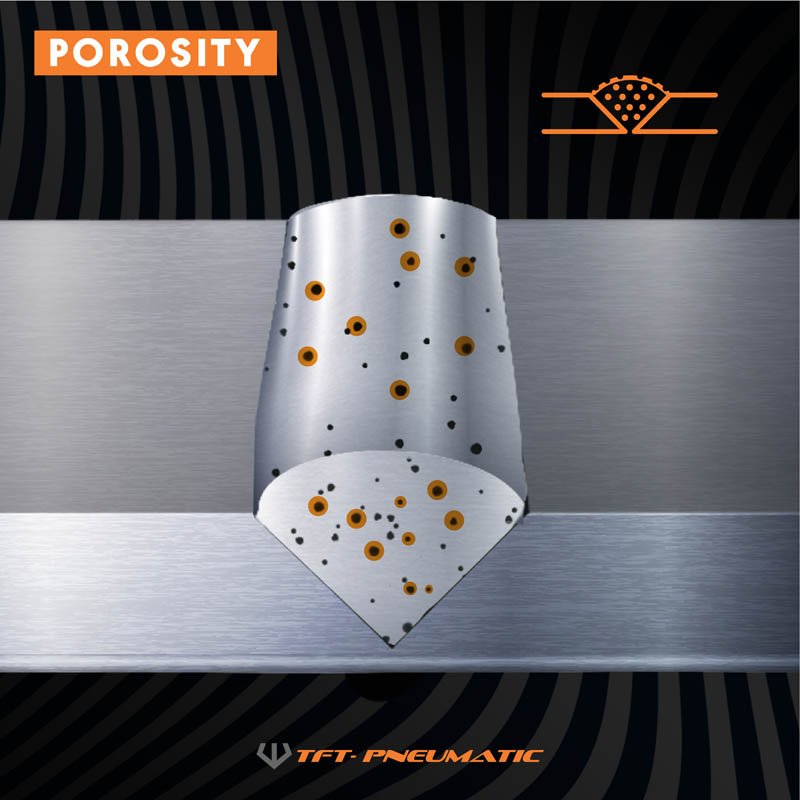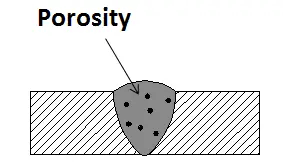What is Porosity in Welding: Comprehending Its Reasons and Enhancing Your Skills
Wiki Article
Recognizing Porosity in Welding: Exploring Reasons, Results, and Avoidance Methods
Porosity in welding is a relentless difficulty that can substantially impact the quality and integrity of welds. As specialists in the welding market are aware, comprehending the reasons, impacts, and prevention methods associated with porosity is crucial for accomplishing durable and trusted welds. By diving into the origin triggers of porosity, analyzing its detrimental results on weld high quality, and checking out effective prevention strategies, welders can boost their expertise and abilities to produce top notch welds continually. The elaborate interplay of aspects adding to porosity needs a comprehensive understanding and an aggressive method to ensure successful welding results.Usual Reasons For Porosity
Contamination, in the type of dirt, grease, or corrosion on the welding surface, creates gas pockets when heated, leading to porosity in the weld. Inappropriate protecting takes place when the protecting gas, generally utilized in processes like MIG and TIG welding, is unable to fully safeguard the liquified weld swimming pool from responding with the surrounding air, resulting in gas entrapment and subsequent porosity. Furthermore, insufficient gas insurance coverage, often due to incorrect flow rates or nozzle positioning, can leave parts of the weld unsafe, allowing porosity to create.Effects on Weld High Quality
The visibility of porosity in a weld can considerably jeopardize the overall high quality and integrity of the bonded joint. Porosity within a weld develops gaps or tooth cavities that deteriorate the framework, making it extra vulnerable to cracking, rust, and mechanical failing. These gaps work as stress and anxiety concentrators, decreasing the load-bearing capacity of the weld and boosting the probability of early failure under applied tension. On top of that, porosity can also offer as prospective sites for hydrogen entrapment, additional worsening the deterioration of the weld's mechanical properties.Additionally, porosity can impede the effectiveness of non-destructive screening (NDT) strategies, making it testing to identify other problems or gaps within the weld. This can lead to considerable safety and security concerns, specifically in crucial applications where the architectural integrity of the bonded components is critical.

Avoidance Techniques Introduction
Offered the detrimental influence of porosity on weld top quality, reliable prevention methods are vital to keeping the architectural honesty of welded joints. One of the main prevention techniques is comprehensive cleaning of the base products before welding. Pollutants such as oil, oil, rust, and wetness can contribute to porosity, so guaranteeing a tidy job surface area is essential. Proper storage space of welding consumables in completely dry conditions is likewise important to stop dampness absorption, which can bring about gas entrapment during welding. In addition, choosing the about his proper welding parameters, such as voltage, existing, and take a trip rate, can help minimize the threat of porosity formation. Guaranteeing appropriate securing gas circulation and insurance coverage is another vital avoidance method, as insufficient gas insurance coverage can cause atmospheric contamination and porosity. Finally, proper welder training and qualification are crucial for applying preventative measures efficiently and regularly. By including these prevention techniques right into welding practices, the occurrence of porosity can be considerably minimized, bring about stronger and extra reliable bonded joints.Value of Correct Protecting
Proper securing in welding plays a vital role in avoiding atmospheric contamination and guaranteeing the honesty of welded joints. Shielding gases, such as Look At This argon, helium, or a blend of both, are generally utilized to secure the weld pool from reacting with components airborne like oxygen and nitrogen. When these reactive aspects enter into call with the hot weld swimming pool, they can cause porosity, bring about weak welds with decreased mechanical residential or commercial properties.
Insufficient shielding can lead to numerous flaws like porosity, spatter, and oxidation, endangering the architectural honesty of the welded joint. Sticking to proper shielding practices is essential to create top notch welds with marginal issues and ensure the durability and reliability of the bonded elements.
Surveillance and Control Techniques
Just how can welders properly monitor and manage the welding procedure to make certain optimal results and avoid defects like porosity? One secret approach is with making use of sophisticated surveillance innovations. These can include real-time monitoring systems that supply feedback on specifications such as voltage, existing, travel speed, and gas circulation rates. By continuously checking these variables, welders can identify discrepancies from the suitable conditions and make prompt changes to avoid porosity development.
Furthermore, executing proper training programs visit this website for welders is vital for keeping track of and controlling the welding process efficiently. What is Porosity. Educating welders on the value of preserving constant criteria, such as correct gas protecting and take a trip rate, can aid stop porosity issues. Normal analyses and qualifications can also ensure that welders excel in surveillance and managing welding processes
In addition, using automated welding systems can boost tracking and control capacities. These systems can precisely regulate welding parameters, reducing the possibility of human error and ensuring regular weld high quality. By combining innovative surveillance modern technologies, training programs, and automated systems, welders can effectively keep an eye on and manage the welding process to lessen porosity flaws and accomplish top notch welds.
Conclusion

Report this wiki page